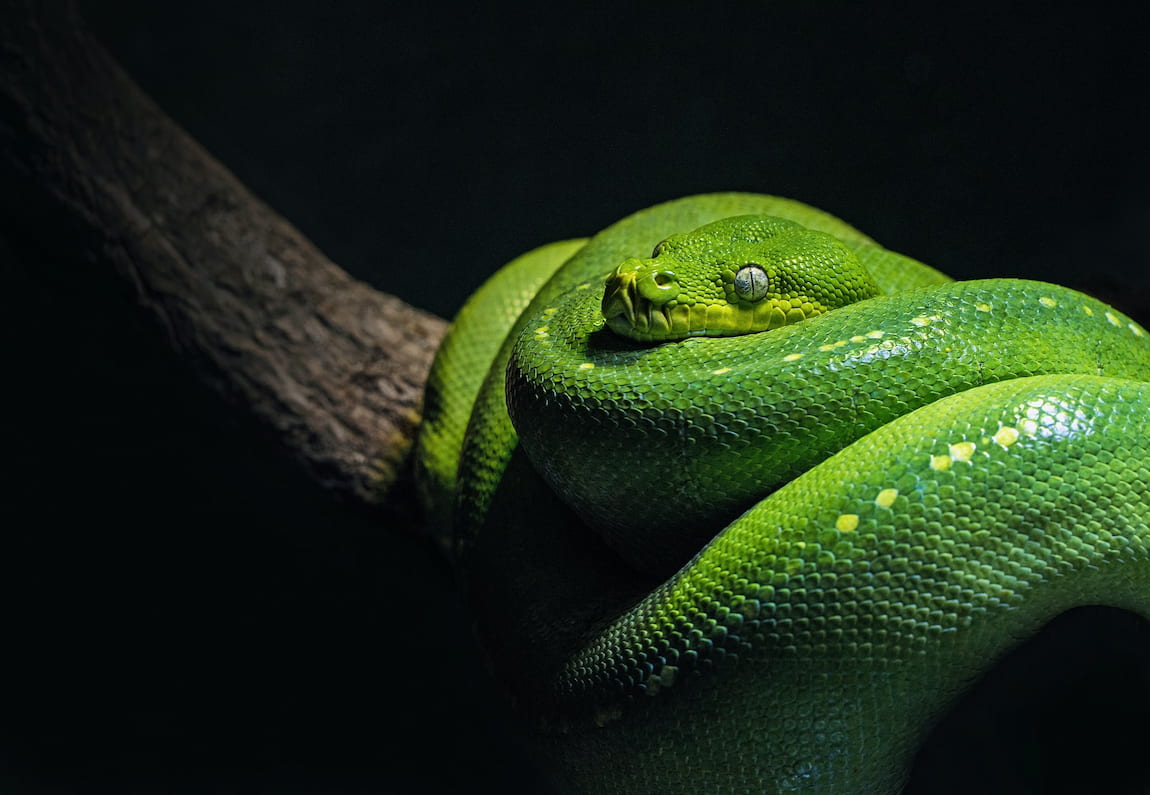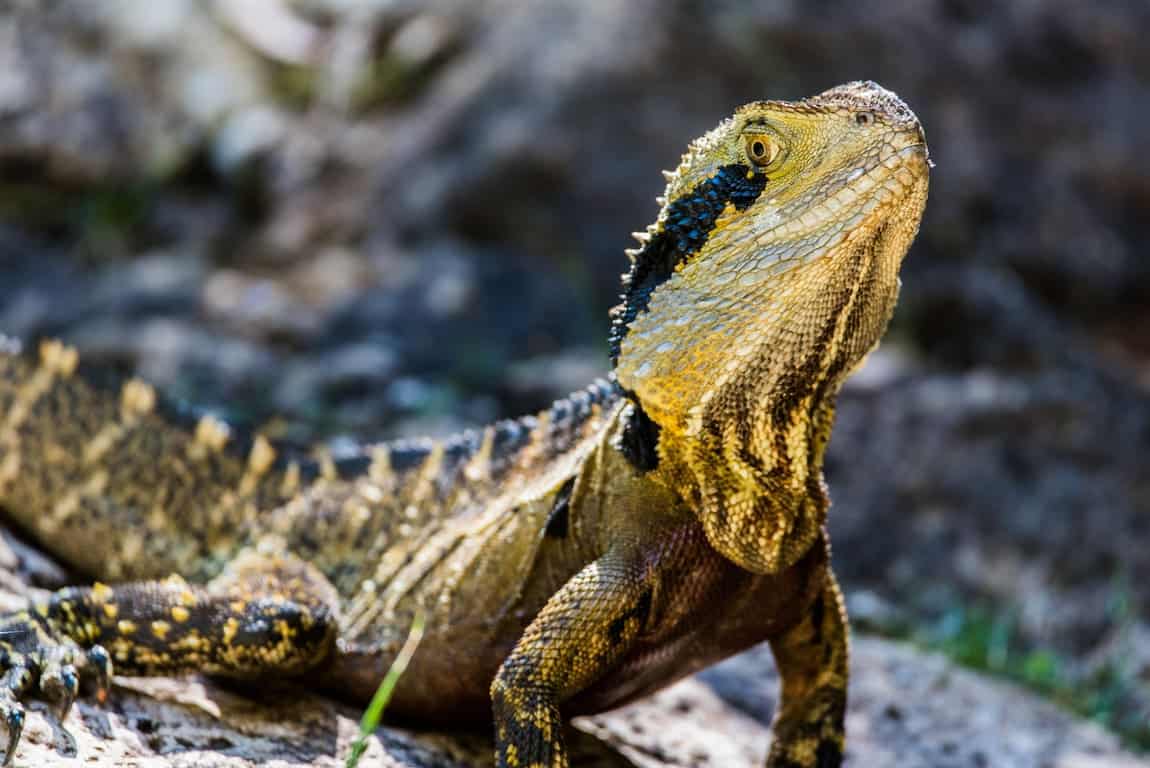Snakes sleep up to 16 hours per day on average but are often seen when basking in the sun or hunting, which leads people to wonder where snakes sleep.
As with many species, snakes look for a place to sleep that provides warmth and protection from predators. Yet, the sleep habits of snakes vary depending on the region and species. Scientists have identified over 3,000 species of snakes around the globe. Some species are nocturnal and sleep during the day while others sleep at night.
Where Do Snakes Sleep in the Wild?
Snakes prefer to sleep in areas that provide shelter, as they often nap after a meal. Snakes cannot move as quickly after eating, which leaves them more vulnerable.
They often look for areas where they can burrow and hide, such as:
- Tree stumps
- Rocks
- Vegetation or leaf debris
- Holes in the ground
A tree stump may have a large enough cavity to provide a spot for a snake to sleep. A fallen log or decaying tree may also include openings that provide shelter.
Rocks, vegetation, and leaf debris are also common places for snakes to sleep, as they can easily slither into a hiding spot. Depending on the species, a snake may only need a gap of about half an inch to squeeze under an object.
Snakes and slither and burrow under objects, but do not create new holes themselves. If you see a snake exiting a hole in the ground, it was likely sleeping in a hole left by another animal, such as rabbits, chipmunks, rats, or groundhogs.
Diurnal Snakes in the Amazon Sleep on Vegetation
While most species of snakes in North America and Europe sleep on or in the ground, many snakes in the Amazon rainforests sleep above ground. Diurnal snakes, which are snakes that sleep at night, sleep coiled on the branches of vegetation in the forest.
Sleeping above ground protects snakes from predators found in the Amazon forests, such as ants, spiders, centipedes, giant water bugs, and scorpions. When sleeping on the ground, insects can swarm a snake.
Where Do Water Snakes Sleep?
Water snakes mostly live near ponds, marshes, rivers, streams, and canals. However, they still tend to sleep under rocks and trees. They look for flat rocks and logs near the edge of the water.
Along with rocks and logs, water snakes may sleep in the soggy soil near aquatic plants or use abandoned beaver lodges and muskrat houses. Water snakes may also climb trees near the water and sleep on the branches. If they are disturbed, they can easily drop back into the water.
Do Sea Snakes Sleep in the Sea?
Due to their flattened tails and a keel running along their bellies, sea snakes cannot easily crawl on land. They sleep, eat, and give birth in the sea.
Sea snakes are found in the tropical and subtropical waters of the Pacific and Indian Oceans where they rest along the surface of the water. They may bask in the sun and rest near the edges of the sea where the water comes shallower.
Where Do Snakes Sleep During the Winter?
Land snakes may continue to sleep under rocks and in tree cavities during the winter. However, many species look for a place that offers more protection and warmth, such as dens made by rodents or squirrels. They may also find shelter in caves and the stumps of old trees.
Snakes do not chew or create holes to find sleeping places. They use existing structures made by animals, people, or nature, especially during brumation.
Snakes and other reptiles in cool regions enter a period of brumation during the winter. Snakes are cold-blooded, which means that they become more lethargic and less active in cooler temperatures. Brumation allows snakes to conserve energy, limiting the need for food and water. Snakes still need to obtain food and water during brumation but do not need to go out as frequently.
Some species of water snake also enter brumation. During the cooler months, they look for areas near the water that provide more cover, including decaying trees and vegetation near the edges of rivers and streams.
Snakes May Enter Man-Made Structures During Brumation
Outside of cities and towns, snakes can often find natural places to rest during brumation. However, snakes in urban areas may need to hide in man-made structures.
Without easy access to trees, rocks, or vegetation, snakes may enter crawl spaces and basements to keep warm. People also occasionally find snakes in garages, barns, sheds, and other storage spaces.
Do Snakes Sleep Alone or in Groups?
Many species of snake sleep in groups during brumation. Sleeping in groups helps them stay warm during the cooler months. Snakes may even travel in groups to find a suitable brumation site. Snakes have been observed sleeping in groups of 20 or more. Sleeping in groups with their bodies coiled tightly allows them to keep their body temperature to a minimum.
The garter snake also tends to sleep in groups during the warmer months, which keeps their body temperatures from falling too low.
Where Do Snakes Sleep in Captivity?
As in the wild, captive snakes look for a place to sleep that provides shelter. They often sleep under bedding or objects, such as an object placed in the enclosure specifically for sleeping.
For example, many snake enclosures include a “snake hide,” which is often an artificial piece of wood or rock with a hollow spot underneath for the snake.
Conclusion
Snakes typically sleep underthings to hide from predators and stay warm. Nocturnal snakes rest during the day and hunt at night while diurnal snakes rest at night.
Common sleeping spots for snakes include: underneath rocks, leaves, and other natural objects. They may also burrow into hollow tree cavities or take over a den abandoned by a squirrel or a rodent, especially during brumation. Water snakes tend to sleep near the water while sea snakes remain in the water while they sleep.





